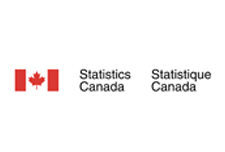Discover financial empowerment resources
Discover financial empowerment resources
A report based on 2021 Census data, about socioeconomic characteristics (e.g. poverty rates and earnings) among transgender men, transgender women and non-binary people, in comparison to cisgender men and...

For some individuals with a disability, the main labour market challenge is to find employment. Others may find it difficult to retain their jobs or qualify for promotion opportunities. This study offers important new insights into the life-long evolution of the earnings of individuals whose...

This study from Statistics Canada explores how increases in top earnings and the representation of women among top earners affect the overall gender earnings gap in Canada. Results show that even though the representation of women in top earnings groups increased from 1978 to 2015, their continued...

We characterize rates of intergenerational income mobility at each college in the United States using administrative data for over 30 million college students from 1999-2013. First, access to colleges varies greatly by parent income. Second, children from low and high-income families have very...
Even before the sharp and enduring increase in unemployment brought on by the Great Recession, policymakers and researchers were concerned about the “hollowing out” of the U.S. labor market. Over the last 25 years, employment and earnings growth for workers in middle-skill jobs has lagged...
We define precarious employment as having an outsized level of uncertainty, whether in terms of pay, ongoing employment, scheduling, or other dimensions. Types of work associated with precarious employment are typically lower paying, with an income gap of between $11,600 and $18,000 in 2014...
This article explores how skill proficiencies are related to household income for Canadians aged 16 to 65 using data from the first wave of the Longitudinal and International Study of Adults (LISA), conducted in 2012. The article also demonstrates how the relationship between skill level and low...
This report focuses on the role that policy design can have on closing the country’s unrelenting and unacceptable racial wealth divide. We utilize a new framework—The Racial Wealth Audit—launched jointly by the Institute on Assets and Social Policy at Brandeis University (IASP) and Demos to...
This is an infographic showing the results of a 2016 survey by the Council of Ontario Universities. The survey shows the employment rates of University graduates 6 months and 2 years after...
As the world continues to change at a rapid pace, the future remains bright for university graduates. With a growing need for a skilled and adaptable workforce to contribute to the betterment of our businesses, our communities and our province, university-educated graduates are using the advanced...
The cost of obtaining a post-secondary education has risen rapidly over the last decade, and that price tag is likely to continue to rise faster than the price of inflation. Numerous academic studies show that the higher future income stream resulting from the investment in a post-secondary...
This article in the Economic Insights series reports on the cumulative earnings over a 20-year period of college and bachelor’s degree graduates from different fields of study. This article is part of a program at Statistics Canada that examines various dimensions of labour market outcomes of...
The Education Policy Research Initiative (EPRI), a national research organization based at the University of Ottawa, has used administrative student data held by 14 post-secondary education (PSE) institutions in four different regions of the country linked to tax files at Statistics Canada in order...
This is an infographic summarizing the employment earnings of post-secondary graduates from different educational programs, 1 year and 5 years after...
...
